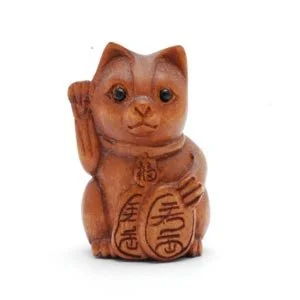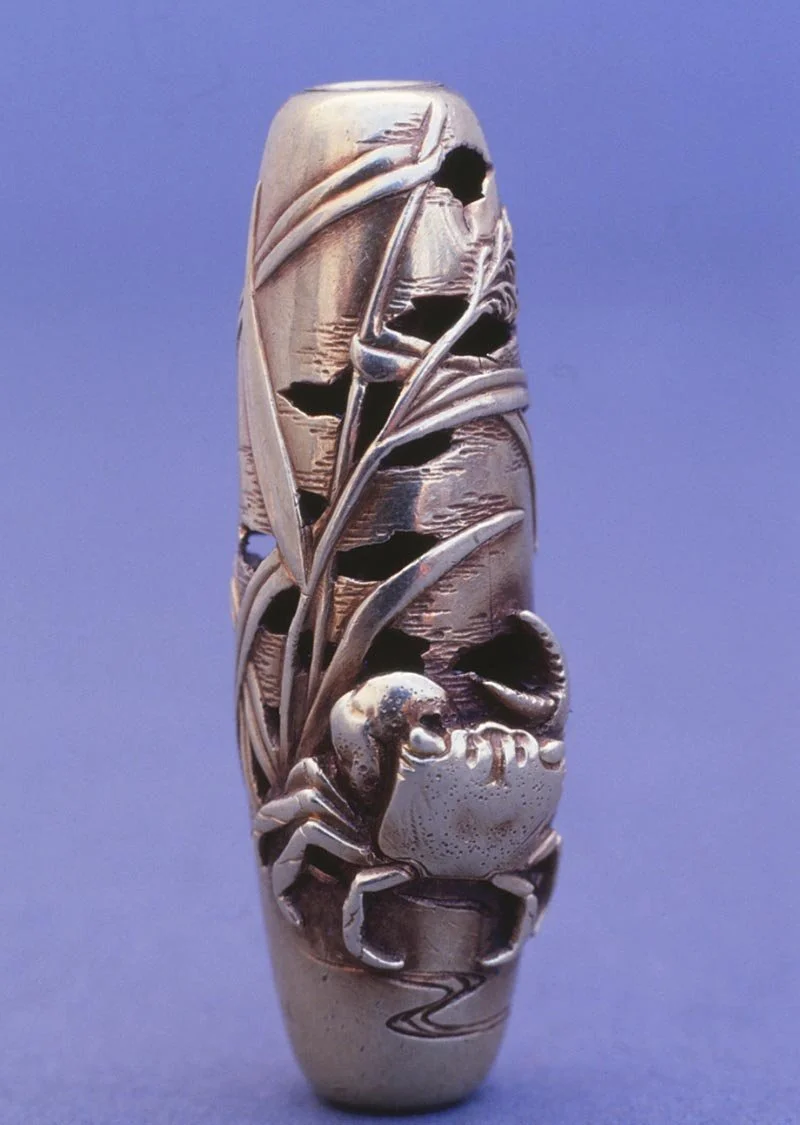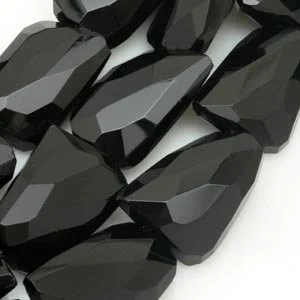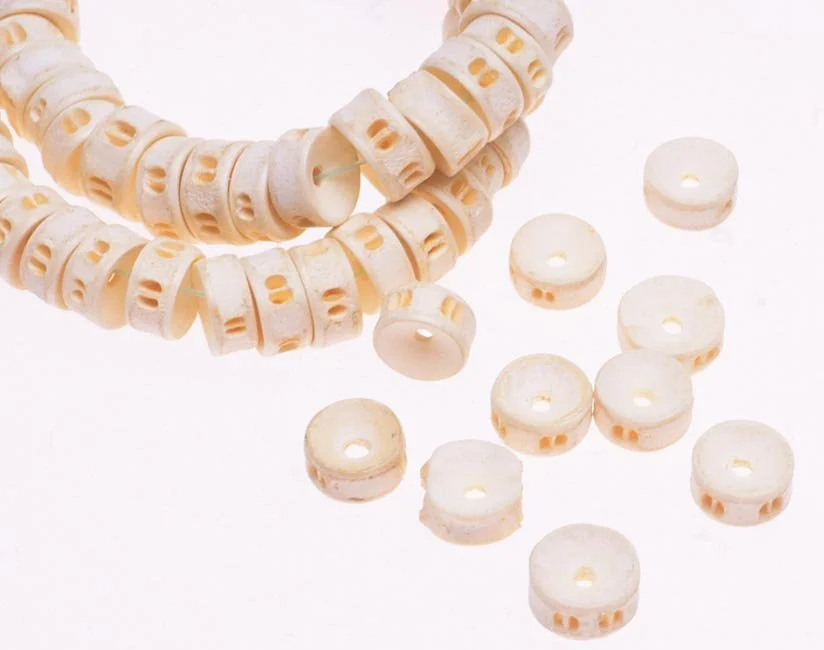Bead Dictionary Letter O
Introduction
In the late 1990s, Penny Diamanti, Joyce Diamanti and Robert K. Liu started working on a Bead Dictionary. Around 2009, after much work by the Diamantis, the Bead Dictionary was posted on the Beadazzled website. Through the years, additions were made by Beadazzled. In the summer of 2018, when the Washington DC Beadazzled store and its website closed, the Bead Dictionary was offered to Ornament. This is a unique resource, especially rich for information on beads of ethnographic and ancient origins. As Ornament has only a staff of three, we are slowly reposting it on our website, updating or expanding some of the entries and are adding search features, links and references as time permits. The Bead Dictionary covers primarily beads and other perforated ornaments, but also tools and materials used by those who make jewelry utilizing beads. Photographs from the Ornament archives are being added, as well as new images taken expressly for the Bead Dictionary and others are being brought up to current standards, as many of these images are almost 30 years old. Original photography was by Robert K. Liu, while Cas Webber did additional photos for Beadazzled, noted in the captions as RKL or CW, after first captions.
This Dictionary of Beads is a labor of love and a work in progress. We welcome your comments and suggestions through the Contact link. To navigate, select from the visual index above to jump to the letter you want in the Dictionary, but give the page a little time to load first. To get back to the top and select another letter use the arrow button. We are continuously adding to the Dictionary, so check back often.
To search for keywords in Dictionary headings, use your browser's search function; for example in Internet Explorer use Control+F and in Apple Command+F, then type in your keyword. We hope you enjoy this (not-so-tiny) treasure, and learn more about the vast world of Beads.
Obsidian
Obsidian is usually shiny black volcanic glass but it can also occur in gray, brown, and green, with white streaks. Opaque to translucent, obsidian has a high vitreous luster. Snowflake obsidian is marked by gray-white radial inclusions.
Because obsidian takes a sharp edge, it was prime material for tools and weapons in prehistoric times. Obsidian beads date from as early as 6000 BC. Amulets and figurines were carved from obsidian in both the Old and New Worlds.
Commonly found in geologically recent lava flows, obsidian is produced by Japan, Indonesia, North and South America, Hungary, Italy.
Obsidian is considered a good luck stone and protective talisman. Small sand-smoothed pebbles are called “Apache tears,” for legend tells that the earth wept when an Apache warrior fell in battle.
More information to come...
9/27/2009 : 2009-12-09 modified
Ojime
Boxwood ojime style bead. Cas Webber
Ojime are beads that were used by Japanese men as slide clasps between an inro and netsuke or between a pipe-case and a tobacco pouch/box, during the period 1603 to 1926. Beads of many materials were used as ojime, including stone, metal, glass and various natural substances. The ones of most outstanding craftsmanship were those of metal, such as the gold one that is illustrated, 2.8 cm high. It is a magnificent example of metalsmithing, employing repoussé, piercing, chasing and possibly casting. The perforation is sleeved to protect the hanging cords from abrasion. This practice extended to many types of ojime, including glass ones, which would otherwise not be distinguishable from other beads.
9/27/2009 : 9/27/2009 modified
A superb example of Japanese metalsmithing, this gold ojime shows vegetation and a small crab (2.8cm). Robert K. Liu
Olive Jade
Olive jade beads. Cas Webber
Information to come...
10/27/2009 : 10/27/2009 modified
Omega Chain
Omega chain is a flat, solid band that looks and bends like the belly of a snake. Not to be confused with round snake chains, omega chains can also come in a domed style. Omega chains are a popular style for adding pendants or slides. Some omega chains can be flipped when worn so that you see gold on one side and silver on the other.
9/27/2009 : 9/27/2009 modified
Onyx
Black onyx beads. Cas Webber
Onyx consists of layered chalcedony with a dark base and light upper band, generally black with white, but sard-onyx has a brown base and carnelian-onyx a red base. Also comes in other shades, often artificially colored. Black onyx is uniformly black, which is seldom found in nature but is usually banded agate darkened by sugar solution treatment. Layered agate, sometimes with three or more bands, is widely used for carving, especially for cameos, which have a raised image, and intaglios, in which the image is incised. Onyx occurs worldwide, with Brazil and Uruguay being the most important sources.
Onyx marble, or Mexican onyx, found in Argentina, the US and North Africa as well as in Mexico, is an altogether different material. This earth-toned limestone is formed as layered deposits from warm springs or as stalactites or stalagmites in caves. Very porous, it is easily, and frequently, dyed.
With its sharply defined layers, onyx is viewed as the stone of separation: thought to cool ardor, provoke discord, and lead to the parting of lovers. By the same token, it is thought to heal emotional trauma and end the cycle of grief.
Opal
The name opal comes from Sanskrit for precious stone. Gemstone varieties of this form of quartz have a distinctive rainbow iridescence caused by opal’s water content and its unique structure consisting of a gel-like mass of minuscule, densely packed spheres. Opaque to translucent and rarely transparent, opals can display an aurora borealis of all the colors in the spectrum. Because opal is soft and brittle, it is usually carved into cabochons, rarely faceted, and almost never used for beads.
Opals were highly prized by the Romans. The senator Nonius chose exile over having to relinquish a cherished opal to the covetous Marc Anthony. In Twelfth Night, Shakespeare praised opal as “the queen of gems.”
Major deposits occur in Australia, the Czech Republic, which was Rome’s source of supply; Guatemala, Honduras, and Mexico, where opals were mined by the Aztecs; and Japan, the US, and Brazil.
In Europe, opal has been considered a hard luck stone, perhaps because of its tendency to fracture spontaneously. In Asia, however, an opal symbolizes loyalty and hope.
Openwork beads
Two gold plated openwork beads. Cas Webber
10/27/2009 : 10/27/2009 modified
Orbicular Agate
Information to come...
10/27/2009 : 10/27/2009 modified
See Also: Agate Botswana Agate
Organic Beads
Fish vertebrae beads from Africa. Robert K. Liu
Beads made from materials that were once living things such as plants and animals. More information to come...
10/27/2009 : 10/27/2009 modified
See Also: Bone Beads Shell Coral
African ostrich eggshell heishi beads. Cas Webber
Ostrich Eggshell Disk Beads
Ostrich eggshell heishi from Africa. Cas Webber
Information to come...
10/27/2009 : 10/27/2009 modified
See Also: Clamshell Disk Beads Disk Beads Heishi Snail Shell Disk Beads






